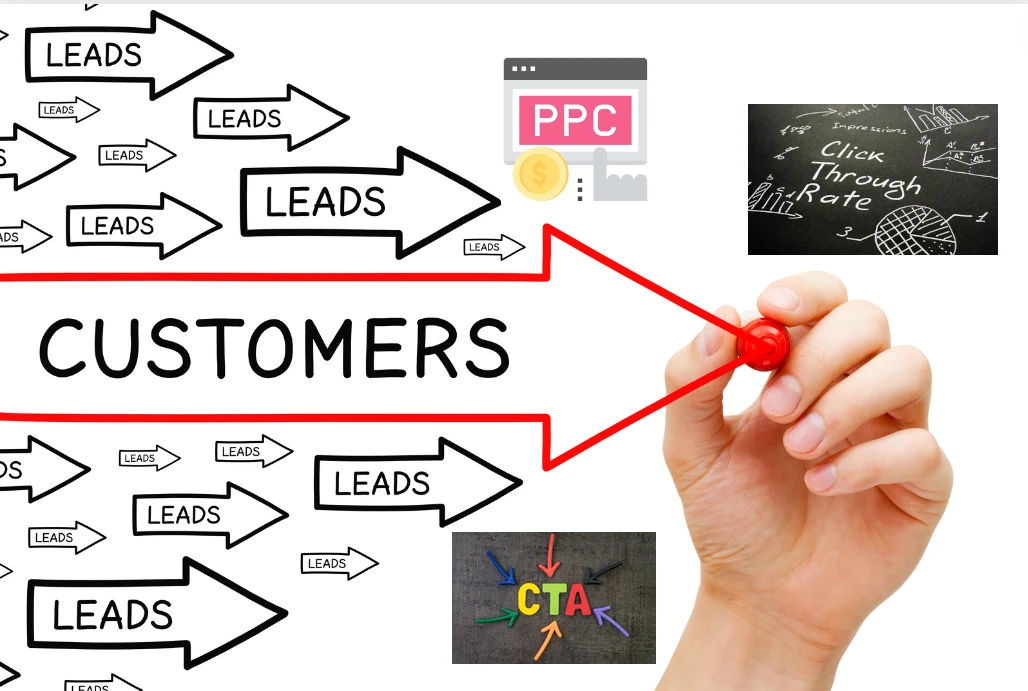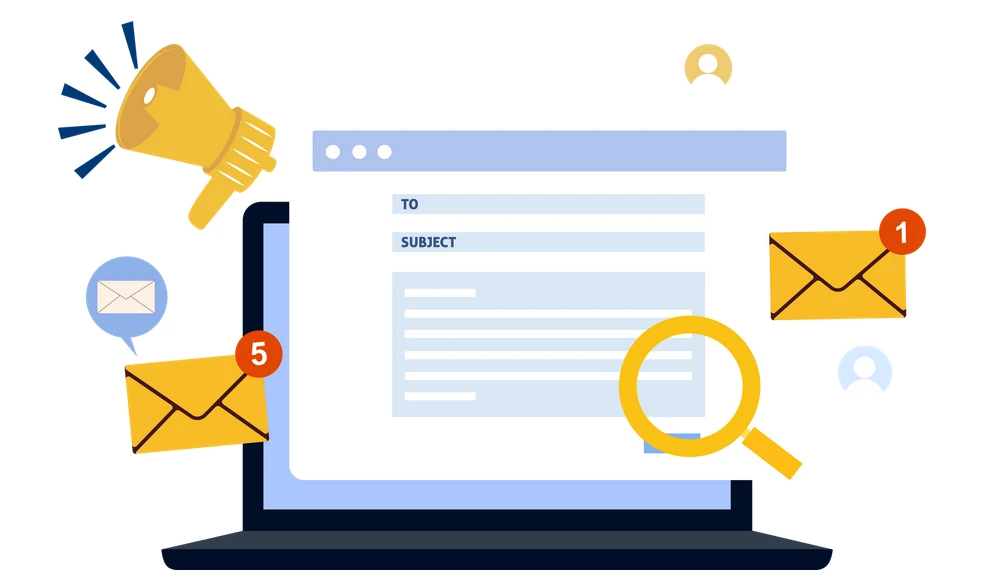Email marketing remains one of the most cost-effective and influential methods of digital marketing, offering an average return of $42 for every dollar spent. This powerful tool allows businesses to reach customers directly, fostering relationships and driving sales through personalized communication. This article delves into the essential components of creating effective email marketing campaigns. From understanding your audience to leveraging automation, we’ll explore strategies that enhance engagement and conversion rates, providing you with practical insights to optimize your email marketing efforts.
Understanding Your Audience
Segmenting Your Audience To maximize the impact of your email marketing campaigns, it’s crucial to segment your audience based on relevant criteria such as demographics, purchase history, and engagement levels. This tailored approach allows for more personalized and relevant communications. For example:
- Demographic Segmentation: Age, location, gender.
- Behavioral Segmentation: Purchase history, website activity.
- Psychographic Segmentation: Interests, values, lifestyle.
Analyzing Audience Behavior Understanding how your audience interacts with your emails is key to refining your strategy. Use analytics tools to track metrics such as open rates, click-through rates, and conversion rates. This data provides insights into what content resonates with your audience, helping you to:
- Identify the most engaging content themes.
- Determine optimal sending times.
- Adjust email frequency based on user engagement.

Designing Your Campaign
Choosing the Right Template The visual layout of your email plays a pivotal role in user engagement. Select a template that aligns with your brand identity and is visually appealing on all devices. Consider templates that offer:
- Responsive design for mobile and desktop.
- Clean, uncluttered layouts that highlight key messages.
- Customizable elements that reinforce your brand’s style.
Crafting Compelling Content The content of your email should captivate the reader and encourage them to take action. Effective content strategies include:
- Engaging headlines that capture attention.
- Relevant and concise information that adds value.
- Strong calls-to-action that guide users towards the next step.
Importance of Subject Lines The subject line is often the first impression your email makes. A compelling subject line can significantly increase open rates. Effective subject lines are usually:
- Short and to the point (under 50 characters).
- Intriguing, yet clear about the email’s value.
- Personalized, when possible, to draw in the recipient.
These initial sections provide a foundation for understanding the essentials of crafting an email campaign that resonates with recipients and drives engagement. Let me know if you would like to proceed with more sections or need adjustments to these.
Personalization Techniques
Using Dynamic Content Dynamic content is a powerful tool in email marketing, allowing you to tailor the content of your emails based on the characteristics or past behavior of the recipient. This can include anything from displaying different products to different segments to customizing greetings and offers. Key approaches include:
- Personalized Product Recommendations: Based on the user’s browsing or purchase history.
- Content Customization: Different images or messages depending on the recipient’s segment.
Personalized Email Paths Developing personalized email paths means creating a series of emails that adapt to the actions taken by the recipient. This can be effective in nurturing leads or guiding them through a complex decision-making process. Consider implementing:
- Trigger-based Emails: Send specific emails based on actions like cart abandonment or browsing a particular category.
- Progressive Profiling: Gradually collect information through multiple interactions to refine future communications.

Optimizing for Conversion
Call-to-Action: Best Practices Your call-to-action (CTA) is crucial for driving users toward your business goals. A strong CTA should be:
- Visibly Clear and Concise: Use vibrant colors and ample spacing to make your CTA stand out.
- Action-Oriented Language: Use verbs that encourage action, such as “Join,” “Download,” “Start,” or “Get.”
- Positioned Strategically: Place CTAs both above and below the fold to catch readers at different points.
Optimizing Email Layout and Design The layout and design of your email can greatly affect how the message is perceived and acted upon. To optimize for conversion:
- Keep the Design Simple: Use a minimalistic design with a clear hierarchy of information.
- Focus on Readability: Use legible fonts and appropriate font sizes, and ensure there is a good contrast between text and background.
- Mobile Optimization: Ensure your email design is responsive, as a significant amount of emails are read on mobile devices.
Testing and Analytics
A/B Testing Strategies A/B testing involves sending two variations of your email to a small percentage of your total recipients to see which version performs better before sending the most effective one to the rest. Key elements to test include:
- Subject Lines: Test different tones and formats to see what generates higher open rates.
- Email Content: Experiment with different images, body text, and layouts.
- CTAs: Try different wording, positioning, and colors to identify what drives higher click-through rates.
Key Metrics to Track To effectively measure the success of your email campaigns, focus on these key metrics:
- Open Rate: The percentage of recipients who opened your email.
- Click-Through Rate (CTR): The percentage of recipients who clicked on at least one link within the email.
- Conversion Rate: The percentage of recipients who completed a desired action, such as making a purchase or filling out a form.
Adjusting Based on Feedback Use analytics to continuously refine your campaigns. Analyze performance data and gather direct feedback through surveys or feedback forms. Implement changes based on this data to:
- Enhance content relevancy and engagement.
- Improve email deliverability and readability.
- Optimize timing and frequency of emails.
Email Marketing Automation and Integration
Automating Email Sequences Automation is a key component in scaling your email marketing efforts efficiently. Automated email sequences can help nurture leads, welcome new subscribers, or re-engage dormant customers without needing constant manual intervention. Key elements to consider include:
- Welcome Emails: Automatically send a personalized greeting to new subscribers.
- Follow-up Sequences: Set up a series of emails triggered by specific actions, like downloading a resource or making a purchase.
- Re-engagement Campaigns: Automatically send emails to users who haven’t interacted with your brand in a specified period.

Integrating with Other Marketing Tools For a seamless marketing experience, it’s crucial to integrate your email marketing software with other tools such as CRM systems, analytics tools, and social media platforms. This integration allows for:
- Enhanced Data Insights: Share data across platforms for more comprehensive analytics and segmentation.
- Coordinated Campaigns: Align your email marketing campaigns with social media and other marketing channels for a unified strategy.
- Automated Workflows: Trigger actions in other tools based on email interactions, enhancing the overall customer journey.
Checkout MailChimp for Free Email Campaigns
Legal and Ethical Considerations
Understanding GDPR and Other Regulations Email marketing must comply with legal standards such as GDPR in the EU, CAN-SPAM in the US, and other national laws. Key legal requirements include:
- Consent: Ensure that recipients have opted-in to receive emails.
- Right to Access and Erase: Allow recipients to access the data you have about them and to request deletion.
- Transparency: Clearly disclose how you collect, use, and store data.
Ethical Email Practices Beyond legal compliance, adhering to ethical standards is crucial in maintaining trust and credibility. Ethical practices include:
- Respecting User Privacy: Handle all subscriber data responsibly.
- Honest Communication: Avoid misleading content and clearly state if emails contain advertising.
- Regularly Updating Consent: Re-confirm consent periodically to ensure subscribers still wish to receive your emails.
Conclusion
Effective email marketing campaigns are an amalgamation of strategic planning, creative content, and meticulous execution. By understanding your audience, personalizing content, and utilizing automation, you can significantly enhance the impact of your campaigns.
However, it’s equally important to adhere to legal and ethical standards to build and maintain trust with your audience. As the digital landscape evolves, continuously adapting and refining your strategies will be key to maintaining engagement and achieving long-term success in your email marketing efforts.